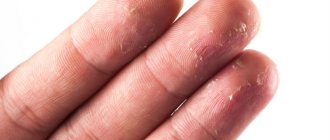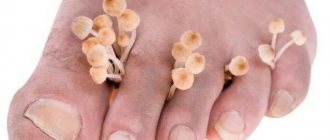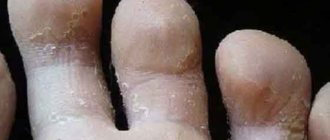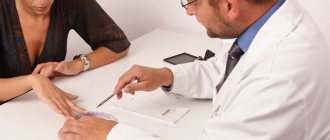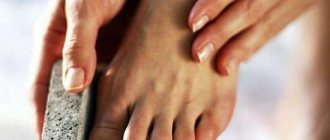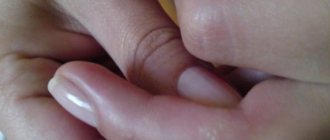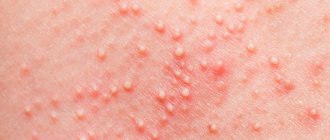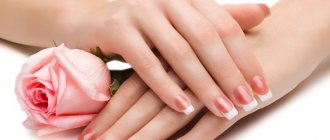Itching and burning on the legs appear with many skin diseases. They may be accompanied by redness, swelling, and severe discomfort. The cause of such anomalies can be fungi, allergic reactions, infectious lesions of the skin.
Under the influence of what factors the itching of the skin between the fingers occurred, and what kind of disease it is, only a doctor can determine. Therefore, if such symptoms occur, you should seek help from a dermatologist. The treatment regimen will directly depend on the cause of itching.
Before you sound the alarm
In adults and children, the causes of skin separation between the toes are the same. Before treating an unpleasant manifestation, you need to understand the nature of its occurrence.
First, pay attention to your shoes. If it is made of leatherette or is very narrow, it is advisable to discard it
If the shoes are of high quality and comfortable, treat the inner surface with hydrogen peroxide or ammonia. This will kill pathogenic bacteria.
Pay attention to cosmetic products. Avoid the use of those that may cause a local allergic reaction.
- Avoid hypothermia and overheating. Monitor the heat exchange of your legs.
- Don't neglect hygiene. Feet should be dry and clean.
! Antibacterial soap or gel can sometimes cause the top layer of the epidermis to dry out, causing flaking.
For diabetes mellitus, it is necessary to moisturize dry feet with creams and ointments, which include decoctions of medicinal herbs
It is important to carefully examine the epidermis for the appearance of cracks and promptly deal with dryness and flaking, since in advanced cases gangrene may develop
If the epidermis peels off without itching or unpleasant odor, then a fungal infection can be ruled out. And you can cope with peeling using traditional methods.
Traditional methods of treatment
Moisturizing creams, all kinds of foot baths with the addition of essential oils and herbal infusions will help cope with dryness and flaking.
Therapeutic bath with soda added
- 0.5 tsp soda,
- 1 tsp salt,
- 3-4 drops of tea tree oil.
Dissolve all ingredients in warm water, soak your feet for fifteen minutes. Using a scrub or washcloth, remove steamed, flaky skin and rinse your feet with cool water. Dry with a towel and apply moisturizer. It is recommended to carry out the procedure twice a week.
Healing bath with added decoction
A decoction (1:5) of one or more medicinal herbs is added to warm water:
- chamomile (has anti-inflammatory, antiseptic and disinfectant properties),
- plantain (relieves inflammation, promotes wound healing),
- yarrow (has bactericidal, antiallergic and hemostatic properties),
- wormwood (natural antibiotic),
- nettle (has anti-inflammatory, cleansing and strengthening properties),
- calendula (anti-inflammatory, wound healing, bactericidal properties).
Keep your feet in this bath for no more than half an hour. The procedure can be carried out daily.
Wraps
In a steam bath, heat 100 grams of any base vegetable oil (olive, sunflower, peach, castor, grape seed oil). Mix with 4 quail yolks. Apply the mixture to dry, clean skin of your feet. Wrap your feet in film. After 30-40 minutes, wash them with warm water and apply a moisturizer.
If it's a fungus
If the skin between the fingers not only flakes off, itches, but also has an unpleasant odor, then medical consultation is necessary. Even with a quick visual examination, a specialist will diagnose the nature of the disease and, after the necessary tests, prescribe the appropriate treatment. Under no circumstances should the course of the disease be allowed to progress, since the infection will cover the entire foot and then it will be very difficult to get rid of the disease.
There are several types of fungal infections:
- epidermophytosis (the skin becomes cracked, peels, itches and smells like cheese);
- rubromycosis (burning, weeping ulcers, severe itching);
- candidiasis (peeling, bleeding wounds, itching).
A large amount of information is now available with photos illustrating the symptoms of an infectious fungal disease.
Treatment of fungal infection is aimed at eliminating symptoms and destroying pathogenic bacteria and microorganisms, as well as accelerating skin regeneration. The use of special gels, creams, ointments and oral medications will help with this.
It is important not to skip pills and to constantly smear the affected areas. Otherwise, the treatment will not give the desired effect and will take several months.
How to treat?
To eliminate unpleasant symptoms at home, you can use traditional methods, creams and ointments based on natural ingredients and oils, but if the condition does not improve within 3-4 days, you should visit a dermatologist.
Drugs
The choice of drug depends on the disease that caused excessive dryness and cracking of the skin. Treatment is aimed at eliminating itching, inflammation, destroying pathogenic microorganisms, and accelerating the regeneration process.
How to treat peeling skin:
- Miconazole, Terbinafine - external agents for the treatment of athlete's foot, they should be used twice a day for a week;
- Nizoral, Mycozoral - antifungal agents for the treatment of rubromycosis;
- Itraconazole, Ketoconazole - antimycotic agents for the treatment of interdigital mycoses caused by fungi of the genus Candida;
- Orungal, Fluconazole - tablets with an antifungal effect, prescribed for moderate and advanced forms of mycosis;
- Betadine, Shostakovsky ointment - moisturizes the skin well and promotes rapid healing;
- SixtuMed is a remedy for the treatment of cracks and peeling of the skin in diabetics.
Nizoral is an effective treatment for fungus
When diagnosing allergies, antihistamines are prescribed - Suprastin, Kestin. To treat eczema, hormonal ointments are needed - Prednisolone, Trimistin.
Folk remedies
Traditional methods will help eliminate itching and flaking of the skin; they can be used as first aid. Include in complex therapy for the treatment of dermatological diseases.
Therapeutic bath to moisturize and cleanse the skin
Mix 5 g of soda, 10 g of salt, 3-4 drops of tea tree oil, dissolve the mixture in 1 liter of warm water. Immerse your feet for a quarter of an hour, sting the top layer of the epidermis with a scrub or pumice stone, and rinse your feet with cool water. Dry, apply moisturizer or medicinal ointment. Carry out sessions until the unpleasant symptoms completely disappear; for prevention, you can do the procedure 1-2 times a week.
Baths with baking soda, salt and oils are good for getting rid of flaking.
Steam baths
If the skin becomes very inflamed, bursts and peels, steam baths will help. Boil 1 liter of water in a small saucepan, add 30 g of chopped hops or chamomile. Place the affected limb over the container and cover with a thick towel. Carry out the procedure for 10 minutes every other day.
Steam baths are good for your feet
Ammonia
If the skin between the fingers is affected by a fungus, ammonia will help - dilute 15 ml of ammonia in 200 ml of water, moisten a piece of thin natural fabric in the solution, and wrap the affected limb. Put a plastic bag and a thin sock on top. The compress should be done before bedtime. To improve the condition, 10–12 procedures will be required.
Ammonia fights fungal infections
Oil wraps
An excellent product for nourishing and moisturizing the epidermis. Heat 100 ml of castor or any vegetable oil in a water bath to a temperature of 40 degrees, add 4 quail yolks. Mix. Apply the mixture to the feet, between the toes, put on plastic bags, and on top - thin socks made of natural materials. After 45 minutes, remove the compress, rinse your feet with cool water, dry well, and apply a moisturizer.
Healing oils will moisturize the skin on your feet
What to do if a child has peeling skin?
If your child has peeling and peeling skin between his fingers, you should consult a dermatologist. When diagnosing a fungal infection, the doctor will prescribe safe antifungal drugs - Exoderil, Terbizil, multivitamin complexes to strengthen the immune system. If other dermatological problems are identified, antihistamines, anti-inflammatory, and antipruritic agents for external use may be prescribed.
Exoderil can be used for children
If a child has peeling skin not only between the toes, but also between the hands, it is necessary to urgently check the blood sugar level. Such symptoms are often the first sign of diabetes in children.
Neurodermatitis
This type belongs to the group of allergic diseases with hereditary manifestations.
The state of the nervous system plays an important role in the course of the disease. The duration of the disease is estimated in decades.
There are two forms of neurodermatitis:
- Limited. Locations on the legs are the popliteal dimples, inguinal and femoral folds.
- Diffuse.
The disease affects any area of the skin. The sores are characterized by... RECOMMENDED VIDEO FOR VIEWING:
Therapy
Treatment of fungal infections on the legs is carried out on an outpatient basis. Complex therapy includes pharmaceutical and folk remedies.
When a bacterial infection occurs, anti-inflammatory, antibiotic and bactericidal agents are added to the treatment regimen.
Medicines
Fungus between the fingers is difficult to treat. Therapy for the disease lasts from 1 month to a year. Mild forms of pathology are eliminated faster and easier. The disease cannot be ignored in the early stages, when the first mild symptoms appear. If you experience discomfort in your toes, you should immediately visit a doctor.
Anti-inflammatory therapy
Inflammation is relieved using 20-minute foot baths with the addition of manganese permanganate. After the procedure, the skin is dried and cleaned of dead and flaking tissue. Then treated with an antiseptic:
- make an application with boric acid or resorcinol,
- Fukortsin.
When the weeping disappears, the epithelium dries out, the lesions are lubricated:
- brilliant green,
- Fluorocort,
- Ultralan with corticosteroids.
Antimycotic drugs begin to be used after suppression of inflammation.
Treatment for bacterial infection
If the fungus is complicated by a bacterial infection, combined medications are used. Apply to damaged epithelial tissues:
- Betamethasone,
- Akriderm,
- Pimafucort is an ointment based on hydrocortisone,
- Natamycin,
- Neomycin.
Systemic treatment with drugs in tablets
Various complications develop against the background of fungal infections. Patients develop allergies, erysipelas, eczema, and concomitant pathologies become aggravated.
Allergic reactions and itching are relieved with antihistamines:
- Suprastin,
- Diazolin,
- Zyrtec.
Simultaneously with antiallergenic tablets, injections of 10% calcium gluconate are given. To cure the disease, antimycotic drugs in tablets or capsules are used.
Patients are prescribed tablets based on terbinafine:
- Lamisil,
- Terbinafine-Teva.
- Orungal,
- Irunin.
To relieve a fungal infection, medications containing fluconazole are used. Tablets with this active substance are called:
- Diflucan,
- Flucosan,
- Mycomax.
Basic therapy is supplemented with medications that improve certain functions of internal organs:
- Festal normalizes intestinal function and restores the process of absorption of nutrients.
- Trental improves blood flow in the feet.
- Arbidol and Taktivin increase immunity.
At home
Baths are made according to the following recipe:
- Soda-salt solutions are an effective home remedy for fighting fungus. The water is heated to 38-40 ℃. Add 1 teaspoon of salt and soda to the liquid. Soar your feet for 20-30 minutes. Cleanses the skin of dead tissue. Treat feet with local antimycotics. The procedure is carried out daily before bedtime.
- Herbal. Prepare the collection: mix chamomile, plantain, and celandine in equal quantities. Boil 1 liter of water, add 3 tablespoons of raw materials. Cool the infusion to 38-40 ℃. Immerse your feet in the liquid for 20 minutes. Remove dead tissue from the surface of the skin. Treat your feet with antifungal drugs.
Lotions help fight fungus:
- soak a cotton pad with a 9% vinegar solution,
- apply the application to the lesion,
- wrap in plastic wrap, leave for 5 minutes,
- wash the foot with warm water,
- lubricate the affected areas with a local antimycotic.
This recipe is used to treat adult patients. On the delicate skin of children, the application may leave a burn.
All folk remedies are used in combination with medications. Use home methods on the recommendation of a dermatologist.
Methods for diagnosing and solving the problem
If you notice one of the above signs, you should not delay visiting a dermatologist.
In addition to the external examination, he will prescribe a number of laboratory tests (blood, testing for fungal microflora, etc.), based on the results of which he will be able to make an accurate diagnosis and select effective treatment.
- If a patient is diagnosed with mycosis, he immediately wonders what kind of disease it is and how dangerous it is. In this case, the fungus between the toes causes severe peeling of the skin. Depending on the degree of damage by fungal microflora, the doctor selects effective drugs. Most often, antimycotic ointments and creams are prescribed for external use (Clotrimazole, Miconazole, etc.). They are applied to the affected area 2-3 times a day without rinsing off. The course of treatment is selected individually (on average 14-45 days).
- If the peeling is not associated with any disease, then it is enough to steam your feet and carefully remove the resulting crusts with a pumice stone. Then regularly lubricate your feet with nourishing cream.
- How to treat peeling caused by hyperhidrosis (excessive sweating). In this case, experts recommend treating areas of the epidermis with talcum powder or baby powder several times a day. In advanced cases, zinc-based medications (Teymur or Levomekolev ointment) are prescribed.
- When wounds form on the surface of the skin, they need to be treated with wound-healing agents with an antibacterial effect. This will speed up the skin regeneration process and prevent the spread of infection. Lorinden ointment, Locacorten, etc. are considered effective drugs.
Treatment in children should be carried out by a pediatrician. Self-medication in this case is contraindicated due to the increased risk of complications.
ethnoscience
In addition to drug therapy, folk remedies also remain in demand:
- warm baths of chamomile, St. John's wort and other medicinal herbs;
- flax seed compresses. To do this, you need to brew the product in boiling water and thoroughly grind it to a mushy state. Apply to the damaged area several times a day until the problem disappears completely;
- baths based on baking soda;
- cauterization of affected areas with iodine, etc.
The degree of effectiveness of such treatment depends on the severity and cause of the problem. Before starting therapy, you should consult a specialist.
Allergic reaction
The appearance of blistering interdigital rashes may be the result of an allergic reaction.
Changes appear when the skin comes into contact with allergens.
Among the most common irritants are:
- household chemical products;
- perfumery products;
- pet hair;
- synthetic fabrics;
- latex;
- food products.
Rashes can also appear with hives. It is characterized by the abnormal development of cells with biologically active elements inside. Enzymes and proteins start the reaction.
With allergic rashes, you can observe a blistering rash, as well as redness. If the blisters burst, the skin first gets wet and then crusts over.
The condition of the skin changes if a person experiences severe stress
Traditional methods of treatment
To reduce peeling of the skin in the area of the feet and toes, it is recommended to use the following traditional medicine methods:
- Apple with milk - grate one green apple on a coarse grater and add two tablespoons of milk. It is recommended to apply the resulting mixture to the damaged areas and secure with a bandage. Duration of treatment is 5 days. Allowed for use from 3 years;
- Olive oil – heat a small amount of oil and apply to the damaged area using a cotton pad. Put on socks and leave the oil on your feet overnight. Use until the unpleasant symptoms of peeling completely disappear;
- Foot baths with soda are recommended for fungal infections. Add a tablespoon of soda to a liter of hot water. Leave the bath for 20 minutes, then apply antiseptic cream to your feet. Duration of treatment is up to 10 days;
- Bath with salt and tea tree oil - add a liter of warm water to a tablespoon of salt and two drops of tea tree oil. Leave the bath for 15 minutes, then lubricate the skin with baby cream. Used from the age of 6 months. Duration of treatment up to 8 days;
- Iodine baths are used for fungal infections and reduce the further development of the microorganism in the epidermis. Add 5 drops of iodine to a liter of hot water and lower your feet. Leave the bath for 5 minutes, then apply an antibacterial drug. Prohibited during pregnancy. The course of treatment is 10 days of daily procedure.
The use of traditional medicine methods helps eliminate mild degrees of skin damage; for more complex ones, the use of special drugs is required.
Therapeutic methods
If the itching between the fingers does not go away, you should seek medical help from a dermatologist. Only an experienced specialist can accurately identify the cause of the disease and prescribe the correct treatment.
Sometimes independent actions can aggravate the situation and cause complications and negative consequences.
After a medical examination and receipt of laboratory test results, the doctor chooses a treatment regimen taking into account the following factors:
- type of pathological microorganism,
- patient's age,
- his state of health,
- presence of chronic diseases.
The following activities will help relieve disturbing symptoms:
- you need to exclude allergic products from your diet,
- refrain from drinking alcoholic beverages,
- avoid contact with chemical household products,
- if there is an allergic reaction, then you need to take an antihistamine,
- if the cause is a fungus, then it is worth using local or systemic agents, which include Mycospor, Nizoral, Clotrimazole,
- scabies disease must be treated with special ointments and sprays.
If there are no contraindications, the doctor may recommend the use of traditional medicine. This treatment involves taking baths with herbs, salt and lavender.
Treatment with ointments
Itching between the toes can be treated with topical treatments. Ointments whose active ingredients are tolnaftate and miconazole have an excellent effect. For example, Clotrimazole ointment is good.
The ointment should be applied primarily to the affected tissue until the symptom is completely eliminated.
Treatment with tablets
If the cause of itching is a fungus that has already penetrated the nail, then you will need to take pills for medicinal purposes. This could be Nizoral, Lamisil, Grisiofulvin.
Sometimes treatment is not complete without taking antihistamines and anti-inflammatory drugs.
Treatment with traditional medicine
Depending on your situation, doctors may recommend home treatment for itching between your toes.
The most common traditional medicine recipes:
- Pre-prepared strong tea should be mixed with 9% vinegar in a ratio of 50 ml to 2 teaspoons. Tampons soaked in this solution should be applied to the affected skin. Procedures must be performed until complete recovery.
- The skin in the area between the fingers can be treated with aloe or celandine juice. For effectiveness, you can add vinegar. Feet should be kept in the solution for about 20 minutes.
- Pour a bottle of glycerin and the same amount of vinegar into a 0.5 liter jar. Shake the mixture with the lid closed. This medicine must be used to treat the affected areas of the legs.
- Salt can be used to treat fungus. It can be poured into socks or used to prepare medicinal baths. To use the second method, you need to prepare a solution with 1 kg of salt, 2 liters of water and 1 teaspoons of soda.
- Feet can be washed with anti-dandruff shampoo. After such washing, you can drip the same product onto the affected nails, if necessary. Treatment may last several weeks.
Preventive actions
To prevent the development of a fungal infection in the areas between the toes, you need to follow a few simple rules:
- It is recommended to wear shoes made of leather or suede;
- shoes should be of high quality and comfortable;
- socks and tights should be selected from natural fibers without synthetics.
By following these recommendations, you can prevent sweaty feet, wounds and calluses.
For prevention purposes, doctors may prescribe the use of antifungal drugs in the form of an ointment or spray. After removing shoes and socks, feet can be treated with a disinfectant solution. You can't wear someone else's shoes. When buying a new thing, it is better to try it on your sock. After taking a bath, you need to dry your feet well and do not walk barefoot. It is important to constantly strengthen your immunity. The diet must include fresh vegetables, fruits, juices and vitamins.
You need to understand that preventing a disease is much easier than curing it. If, in addition to itching, other accompanying symptoms inherent in an allergic reaction appear, then you should consult a doctor to receive timely treatment.
Causes and symptoms
There are many reasons for excessive exfoliation of the epidermis on the legs. Starting from fungal diseases, ending with incorrect anatomy of the foot.
Known causes include:
- Improper foot hygiene. The appearance of diaper rash and peeling is caused by a banal lack or lack of hygiene of the limbs. Washing your feet after wearing shoes for a long time is always a mandatory procedure. It is also necessary to monitor the cleanliness of socks and general care of the skin of the feet;
- Anatomical features. If a person’s fingers are positioned incorrectly (overlapping each other), then problems arise with hygienic procedures in the interdigital spaces. In overweight people, the fingers are too closed, and this in turn provokes hyperhidrosis (excessive sweating) and insufficient ventilation. A sedentary lifestyle makes the situation worse;
- Diabetes. It is characterized by a violation of the metabolism of carbohydrates in the body and is thereby reflected in the condition of the skin of the feet. Against the background of diabetes, there is pronounced peeling and dryness between the fingers, the skin begins to crack, itch, and as a result erosion develops;
- Contact dermatitis. The most famous skin disease that spreads not only to the legs, but to the entire body. According to statistics, dermatitis is detected in 11% of people with complaints of itching, burning, redness and dryness between the fingers. The main reason is direct contact with the irritant. In the case of feet, this is the material of shoes, socks, etc. Also, contact dermatitis develops against the background of overheating of the feet, sweating and atopy (dry skin);
- Fungal infections. The skin becomes infected due to the entry of the Trichophyton fungus into unprotected areas on the legs. It is present on the skin in small quantities and does not cause any harm to healthy people. If there are wounds or microcracks in the interdigital spaces, the parasite penetrates into these areas and thus the parasitic process starts. As a result, peeling and severe itching appear.
Fungal infection is divided into 5 forms:
- Erased. The skin peels only between the little and ring fingers;
- Squamous. Increased itching occurs during sweating or after moisture enters the affected area;
- Hyperkeratotic. The burning sensation becomes intense at night. Plaques similar to calluses form on the affected area;
- Intertriginous. Ulcers form in the affected interdigital spaces, the skin becomes severely cracked, unbearable itching and pain appear;
- Dyshidrotic. Erosion, purulent blisters and separation of serous exudate appear through small defects in the epidermis (wetting);
- Trench foot. This is the name of a seasonal disease, which is a type of frostbite. Develops due to prolonged exposure of the feet to moisture, dampness and cold. In this case, bubbles with jelly-like contents form between the fingers. This condition is not contagious to other people. With insufficient or no treatment for this pathology, necrosis begins;
- Chronic eczematous dermatitis. The disease is characterized by an inflammatory process in the skin tissues. The arms may be affected, but are more common on the lower extremities. In this case, small, very itchy blisters form, redness and peeling appear between the toes. The main risk group is people from 20 to 45 years old.
Very often, fungal infections of the feet and allergic reactions are observed in young children. Peeling between the toes of a child appears due to too warm shoes, socks, etc. Allergies appear to cosmetics with an aggressive composition.
Do not forget that children's skin is thin and sensitive, so creams or lotions used by an adult are not suitable for a child.
Peeling on the legs of a baby is the result of vitamin deficiency (vitamin deficiency), poor nutrition, endocrine diseases, too dry air in the room where the child is, etc.
Foot diseases accompanied by unpleasant symptoms can spread to other healthy areas of the skin and nail plates. Even if there is peeling between the toes without itching, you should not turn a blind eye to it. Therefore, you should undergo a comprehensive examination and be examined by a dermatologist.
Why does the skin between a child's fingers peel off?
The skin on children's legs is very thin, which leads to frequent injury, cracks, peeling, and itching. Mycoses, allergies, chronic diseases can cause deterioration of the epidermis.
Read: Treatment of mycosis of the feet
Causes of peeling skin in the interdigital area in a child:
- very dry indoor air, excessively warm shoes, socks, prolonged exposure to chlorinated water;
- allergies, use of overly aggressive cosmetics that are not intended for adults;
- endocrine diseases;
- allergies, vitamin deficiency, unbalanced diet;
- mycosis;
- severe stress.
The cause of peeling in a child can be both external and internal factors.
Causes of itching
The most obvious cause of itching is athlete's foot, scabies, dry or wet eczema. Infection can occur through contact with contaminated surfaces in public places, household items, and also by wearing someone else's shoes. In the presence of predisposing factors, the pathogen penetrates the skin, causing irritation, burning, and bruising. The fungus most often affects the tissues around the little finger and thumb.
Allergic reaction
The appearance of blistering interdigital rashes may be the result of an allergic reaction. Changes appear when the skin comes into contact with allergens.
Among the most common irritants are:
- household chemical products;
- perfumery products;
- pet hair;
- synthetic fabrics;
- latex;
- food products.
Rashes can also appear with hives.
It is characterized by the abnormal development of cells with biologically active elements inside. Enzymes and proteins start the reaction.
With allergic rashes, you can observe a blistering rash, as well as redness. If the blisters burst, the skin first gets wet and then crusts over.
The condition of the skin changes if a person experiences severe stress
Main symptoms
In the initial stages, the disease resembles common prickly heat in appearance: small pimples and redness appear on the epidermis. Over time, they begin to itch very much; when scratching, the upper layers are damaged and begin to peel off. Other unpleasant signs include:
- the formation of ulcers on the surface of the skin, which bleed heavily when damaged;
- the skin peels off and smells like cheese (in case of a fungal infection);
- After scratching, an infection gets into the wounds and the inflammatory process begins.
Peeling often occurs without itching or other unpleasant symptoms. This indicates excessive dryness of the epidermis, however, in the absence of timely treatment, the problem will only worsen.
Where it all begins
It all starts with minor redness, which an inexperienced person can easily confuse with ordinary irritation due to uncomfortable shoes. At first, such symptoms do not cause much discomfort , but a little later severe itching, pain, and a burning sensation may appear in these places. As a result, the skin will gradually begin to peel off, and cracks will form in the affected areas.
The culprit is the usual diaper rash on the legs , which significantly reduces the quality of life and can even be a symptom of a very dangerous disease. At first, the person will simply feel uncomfortable walking, and then he will begin to experience severe pain. The sweat will acquire a specific strong smell, so you will have to blush a little in front of your colleagues when changing in the locker room, and you will have to forget about going on a visit.
The situation can be further complicated by the fact that the toes are quite close to each other, so wearing closed shoes will only aggravate the problem. However, sandals or open sandals will also not be the best choice, since dust will get into wounds and microcracks, an infection will develop and the patient’s suffering will intensify.
